25 Lessons Learned from Business Setbacks and Failures
Business setbacks offer invaluable lessons that can transform future success, as demonstrated by expert insights across 25 distinct experiences. These hard-earned strategies cover everything from making data-driven decisions to maintaining strong cash reserves through market fluctuations. Discovering how successful professionals turned failure into opportunity provides practical frameworks for confronting challenges and rebuilding with greater intelligence and purpose.
Pivot With Purpose When Industry Skepticism Hits
One of the toughest setbacks we faced at Eprezto was early on, when we underestimated how difficult it would be to get traditional insurance companies to trust a fully digital model. We had a product that worked, users were signing up, but we couldn't get insurers to fully commit. It felt like a dead end, we were stuck between customer demand and industry skepticism.
Instead of pushing harder in the same direction, we took a step back and looked at what we could prove with data. We decided to license parts of our technology, like our quoting system, to those same insurers. That allowed them to see, firsthand, how much more efficient and transparent digital processes could be. Within months, several of them came back wanting to partner.
That experience completely reshaped how I think about setbacks. It taught me that failure isn't final, it's feedback. If something isn't working, it's not about quitting, it's about pivoting with purpose. Sometimes the best way forward is sideways, and that's exactly what saved Eprezto.
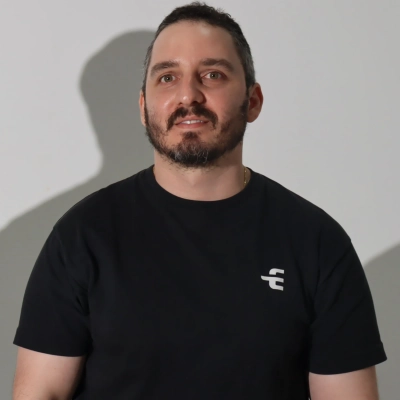
Build Multiple Pathways to Achieve Your Goals
Being the founder and managing consultant at spectup I've faced setbacks that felt far larger at the moment than they appeared in hindsight. One instance that stands out was early in my consulting career when we were helping a promising startup prepare for a Series A round. We had spent months refining the pitch deck, modeling financial projections, and mapping investor outreach, but a key investor pulled out at the last minute due to an internal shift in their fund. I remember sitting in our war room with one of our team members feeling the weight of all that work suddenly at risk. It was a tough moment, but it forced me to reflect deeply on the fragility of relying too heavily on any single channel or strategy.
The first lesson I took away was the importance of building multiple, parallel pathways to achieve a goal. At spectup we now encourage clients to diversify investor touchpoints, track engagement signals, and create fallback plans long before they are needed. I also learned the value of transparency and calm communication with clients when setbacks occur. In that case, we quickly restructured the outreach plan, focused on nurturing warm leads, and introduced alternative investors who ultimately aligned even better with the startup's vision. The experience reinforced that failure is rarely fatal; it is often a signal to pivot, adapt, and strengthen processes. Another critical insight was the emotional management aspect, staying composed and guiding clients through disappointment builds trust and credibility in a way that results alone cannot. Since then, I've applied this mindset across spectup engagements, ensuring our teams anticipate contingencies and maintain momentum even when things don't go as planned. The setback taught me that resilience, preparation, and strategic flexibility are just as important as analytical skill in driving long-term success. Ultimately, it shaped how I mentor both clients and internal teams to treat challenges as learning opportunities rather than roadblocks.

Turn Personal Tragedy Into Professional Strength
After losing my husband to cancer at 36, my mental health and my business took a significant hit. But that experience gave me something invaluable: perspective, resilience, and determination. Today, I channel that strength into my business, and I am focused upon helping others grow both personally and professionally.

Discipline Creates Scale, Not the Reverse
My biggest business setback didn't come from a bad product or a slow sales quarter—it came from scaling too fast on the wrong foundation. We had momentum, demand, and a team willing to sprint. What we didn't have was operational stability. Instead of tightening execution, I chased growth. Instead of fixing bottlenecks, I built around them. Eventually, the cracks turned into fractures—projects slipped, cash flow tightened, and team morale dropped because we were constantly reacting instead of leading. Growth exposed everything we hadn't stabilized.
When everything finally hit at once, I made the hardest decision of my career: we paused expansion and rebuilt the operating system of the business from the inside out. I didn't delegate the turnaround—I owned it. We redesigned processes, reset expectations with clients, simplified our offers, and built a cadence of accountability that created discipline without killing creativity. It was humbling. It was messy. It saved the company.
The most valuable lesson I learned? Growth is not the goal—sustainable growth is. Revenue can hide problems for a while, but it will never fix them. Scale doesn't create discipline. Discipline creates scale. I used to think resilience was about pushing harder. Now I know it's about building smarter—protecting your capacity, systems, and people before chasing the next big milestone.
Setbacks don't break businesses. Ego does. The faster you face reality, the faster you can rebuild momentum.
Transparency Matters More Than the Problem Itself
During the early operations of Cafely, one of the major setbacks that cost us a lot was when our supplies were delayed for a few weeks, which put our operations to a stop. We lost revenue because we could not ship any orders, and also lost our credibility to our customers. Instead of panicking, we decided to show transparency by reaching out to each and every customer regarding the whole situation. We explained the problem and offered discount vouchers for their next orders. What surprised us the most was how most of the customers appreciate our transparency, and some even expressed that, despite the issue, they are still willing to wait. I learned from that experience that communicating transparently during a problem matters more than the problem itself. That taught us to create backup contingency systems, such as having multiple suppliers, better forecasting, and clearer customer service, so that if it could happen again, the whole operation will never grind to a halt.

Develop Risk Plans and Seek Mentor Guidance
The way I handled my biggest business setback was by developing a comprehensive risk management plan that included identifying potential risks, creating contingency strategies, and establishing clear action steps to address unforeseen challenges. I also recognized the importance of seeking guidance from experienced mentors who could provide valuable insights and support during difficult times.
The most valuable lesson I learned from this experience is the necessity of always being prepared for possible setbacks by having an actionable plan in place. Additionally, building a network of good mentors is crucial, as their guidance can help navigate complexities and turn setbacks into learning opportunities. This approach enabled me to adapt quickly, minimize damage, and ultimately develop a stronger, more resilient business strategy.
Make Data-Driven Decisions, Not Emotional Ones
My biggest business setback came early in my entrepreneurial journey when I had to make the difficult decision to shut down several of my first ventures. The financial data clearly showed that our business models weren't viable, and continuing would have been throwing good money after bad. This experience taught me that adaptability is perhaps the most critical skill any business leader can develop. I learned to look at the numbers objectively and make decisions based on data rather than emotional attachment to an idea or project. Walking away from those failing businesses was one of the hardest things I've done professionally, but it taught me that strategic retreats preserve resources for future opportunities. This perspective has completely transformed how I evaluate business risks and opportunities today.
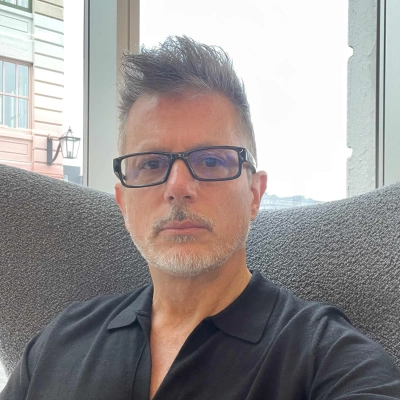
Trade Ego for Empathy in Product Development
One of the hardest lessons I learned as a founder came from a project that failed—not because of a lack of effort or vision, but because I misjudged timing and focus. A few years ago, I launched a product that I was convinced would transform how businesses managed digital workflows. We invested months in development, marketing, and outreach. But what I didn't fully account for was that the market wasn't ready for what we were offering. Clients liked the idea in theory, but adoption lagged. Cash flow tightened, and we had to make the difficult decision to pause the project.
At first, it felt like a personal failure. I had poured myself into this product. But when I took a step back, I realized the real issue wasn't the idea—it was my attachment to it. I had been so focused on building something "innovative" that I lost sight of whether it solved an immediate, painful problem for our clients. That realization completely reshaped how I approach business decisions today.
Since then, I've learned to test early and listen relentlessly. Instead of developing in isolation, we now validate concepts with clients at every stage—sometimes even before writing a single line of code. I've also learned the importance of knowing when to pivot, not as a sign of defeat, but as a sign of maturity as an entrepreneur.
That failure taught me that resilience isn't just about pushing through; it's about adapting intelligently. In hindsight, the setback was one of the most valuable experiences of my career. It forced me to trade ego for empathy—to build not just for innovation's sake, but for real people with real needs.
Looking back, I'm grateful for that tough chapter. It humbled me, sharpened my instincts, and taught me that the true mark of a founder isn't how many wins they collect—it's how they respond when things don't go according to plan.
Separate the Event from Your Identity
Everyone talks about failure as a great teacher, but they often leave out the most difficult part of the lesson. In the immediate aftermath of a major setback, your mind isn't a classroom; it's a chaotic mess of ego, shame, and second-guessing. My biggest failure was leading a new division that we had to shut down after 18 months, resulting in layoffs for a team I had personally hired. The initial autopsy was straightforward—we misjudged the market timing and our parent company's appetite for risk. But that analysis did little to quiet the feeling that I had personally let people down.
The most valuable lesson I learned had nothing to do with market analysis or strategy. It was about separating the *event* from my *identity*. For months, my internal story was, "I am a leader who failed." This narrative is paralyzing because it's a judgment on your character, not your actions. The real work wasn't just understanding what went wrong with the business, but meticulously reframing that internal story to, "I led a project that failed." The first is a brand on your soul; the second is a data point on your journey. It's a small change in wording, but it makes all the difference in your ability to get back up.
I saw this play out with a mentee whose first startup folded. Publicly, he gave the polished "we learned so much" speech, but privately, he was stuck, terrified to try again because he'd internalized the failure. He couldn't separate the company's outcome from his own self-worth. We worked on articulating the facts: he ran an experiment that produced a negative result, and he now had invaluable data about that specific market. By focusing on the data instead of the drama, he was able to start his next venture, not as a "failed founder," but simply as a more experienced one. It's about learning to carry the lesson without having to carry the weight.
Attention Sustains Loyalty, Not Assumption
A major client departure once threatened our revenue stability and long-standing credibility in the market. Losing them exposed complacency that had quietly developed after years of uninterrupted success. We responded by analyzing every step of the relationship and identifying where engagement weakened unnoticed. The insight led to redesigned client feedback systems and early-warning indicators for potential dissatisfaction. That loss became our wake-up call reminding us that attention sustains loyalty, not assumption.
Rebuilding reputation demanded persistence, consistency, and personal outreach beyond transactional repair offers. We focused on improving communication and ensuring every client felt genuinely heard and supported. The process strengthened trust across our portfolio and diversified dependence away from single accounts. Lessons from the loss now shape how we prioritize relationships over expansion metrics consistently. Success depends less on growth and more on gratitude toward those who enable it.

Test Small Before Launching Big Programs
I've run CPT for thirty years, and one failure still sticks with me. Our first advanced obedience program flopped hard - only three clients signed up in the first month. Instead of pushing forward, we called every customer who turned us down. They wanted hands-on practice, not lectures. We rebuilt the whole thing around what they actually said. Now I test every new program with ten clients before launching anything. Getting it wrong first taught me more than getting it right ever could.
View Failures as Data Points, Not Endpoints
One of my biggest business setbacks came when a product launch didn't meet expectations. We had done everything "by the book," but the market response was lukewarm. Instead of seeing it as a loss, I treated it as an opportunity to listen and learn. We gathered honest feedback, analyzed what went wrong, and used those insights to refine both the product and our process.
The most valuable lesson I learned was resilience through reflection—failures aren't endpoints, they're data points. That experience taught me to stay curious, not defensive, and to see every setback as a necessary step toward long-term growth.

Good Ideas Need Structure to Become Businesses
There is a huge difference between a good idea and a good business. A while back, I poured time and money into a concept I was passionate about but hadn't fully thought through. Eventually, I had to be honest with myself and pull the plug. It was tough, but it forced me to slow down and look at the difference between inspiration and execution. A good business needs structure, systems, and a clear path to profit. That experience humbled me, but it also made me much wiser. Now, before I commit, I look for clear signs that the model works, not just the excitement that it could.
Confront Problems Head-On, Rebuild More Intelligently
My largest business setback occurred when I was working on a big renovation project and encountered unforeseen structural problems. What started out as a simple remodel soon became a challenge for leadership and ingenuity. Costs skyrocketed, the timeline fell apart, and I was forced to decide between taking shortcuts and completely recalibrating. To maintain the integrity of the work, I made the decision to slow down the project, start over with a new plan, and hire experts. Although it took longer and cost more than anticipated, the outcome was better than I had anticipated, and I learned that openness, even during challenging times, fosters enduring trust with crews and clients.
The most important lesson I took away from that experience is that failures are opportunities for recalibration rather than obstacles. Pressure reveals process in real estate and construction. It compels you to improve communication, streamline processes, and approach problem-solving with humility rather than haste. Success comes from confronting failure head-on and rebuilding more intelligently each time, not from avoiding it.

Protect Reputation Over Financial Considerations
My biggest business setback was losing a massive commercial contract due to an uninsured structural failure during the warranty period. The failure wasn't in our workmanship, but in a faulty material we used at the manufacturer's recommendation. The conflict was the trade-off: pursuing a lengthy, uncertain lawsuit against the supplier versus immediately absorbing the seven-figure loss to protect our brand's structural integrity and reputation.
I handled the failure by enacting an immediate, non-negotiable Structural Liability Absorption. I publicly announced we would cover the entire repair cost—the full tear-off, replacement, and interior damage—without waiting for the insurance claim or the supplier lawsuit. This was a necessary, painful trade-off that risked the entire company, but it eliminated the prolonged structural failure of customer trust and preserved our reputation as a company committed to guaranteed certainty. The quick action stopped the negative press and converted a disaster into a testimonial.
The most valuable lesson I learned is that integrity is a measurable asset that must be priced into every job. We now view high-quality materials and comprehensive, expensive insurance as the core heavy duty structural foundation of our business model, not as negotiable costs. The biggest setback taught me that the cost of recovering from a reputation failure is always greater than the cost of superior materials and full liability coverage. The best way to handle a setback is to be a person who is committed to a simple, hands-on solution that prioritizes structural accountability above all else.
Ask for Help and Learn Step by Step
My biggest setback happened when I first transitioned from teaching to real estate and took on a property that needed way more work than I anticipated--what looked like cosmetic fixes turned into major electrical and plumbing issues. I was hemorrhaging money and completely out of my depth, but my teaching background kicked in: I approached it like helping a struggling student, breaking down each problem step-by-step and asking for help from experienced contractors who became mentors. That experience taught me that real estate success isn't about knowing everything upfront--it's about having the humility to learn quickly and building a support network of people who can guide you through the unknown.
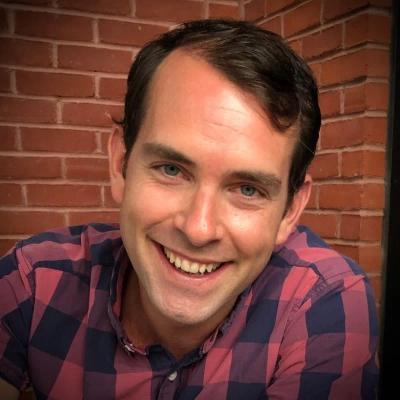
Clarity of Soul Drives Meaningful Business Growth
My biggest business setback came after building my first agency too fast. I chased growth before soul. On paper, things looked great: a team, global clients, constant motion. But underneath everything, I was burnt out and disconnected from why I started in the first place.
When it all fell apart, it forced me to ask harder questions. What did I actually want to build? What kind of leader did I want to be? That collapse taught me that clarity of soul isn't a deliverable, it's a discipline.
When I started OG Solutions, I rebuilt everything around that idea. No more autopilot, no more hustle for the sake of it. I designed a business where clarity and intention drive every single choice I make... from clients to creative work to how I spend my time.
The lesson? Success without alignment isn't success. When you slow down long enough to get clear, growth stops feeling like survival and starts feeling like choice.

Calculate Risk Properly in Coastal Property Investments
My biggest setback was when I got emotionally attached to a waterfront property here in Wilmington and ignored the flood zone risks--Hurricane Florence hit two years later and wiped out most of my investment. That painful lesson taught me to separate my heart from my head when evaluating deals, especially in coastal NC where we live with hurricane season every year. Now I factor weather patterns and insurance costs into every coastal property analysis, which has actually opened up opportunities other investors miss because they're afraid of the risk I've learned to properly calculate.
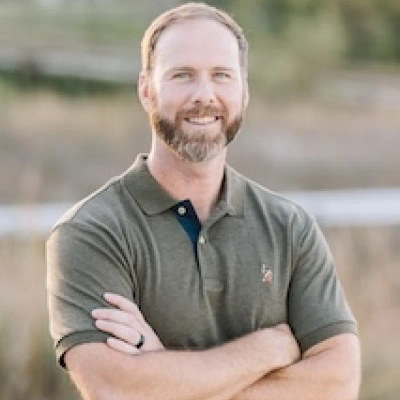
Maintain Strong Cash Reserves Through Market Cycles
My biggest setback was getting caught in the 2008 housing crisis with properties I couldn't sell or refinance. I had overleveraged our company and wasn't prepared for such a dramatic market shift. What saved us was transparent communication with everyone involved--lenders, partners, and clients. I learned that maintaining strong cash reserves isn't being overly cautious, it's essential business strategy. Now I follow a strict 3-to-1 cash flow rule for every property we consider, which has protected us through multiple market cycles while actually improving our acquisition opportunities when others are forced to sell.
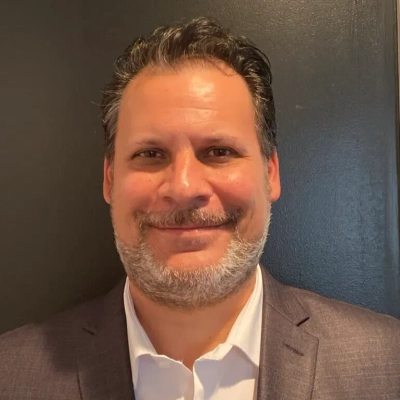
Inspect Every Property Before Purchase
Early in my manufactured home business, I purchased three mobile homes sight unseen based solely on photos and seller descriptions--a rookie mistake that cost me over $30,000 when all three needed major structural work I hadn't budgeted for. That painful lesson completely changed how I operate: I now physically inspect every single mobile home before purchase and bring a contractor with me to assess foundation, plumbing, and electrical systems. It taught me that in the manufactured home space, what you can't see often costs more than what you can, so thorough due diligence isn't optional--it's survival.
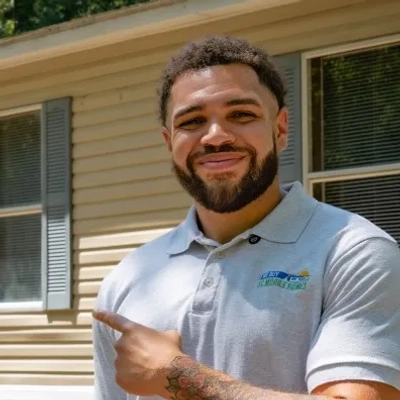
Choose Fewer Deals With Deeper Connections
Early in my career, I tried to scale too quickly and took on several distressed properties simultaneously without proper financial cushioning. When one deal required unexpected foundation work and another had title issues, I found myself cash-strapped and stressed beyond belief. That experience taught me that sustainable growth in real estate means prioritizing relationships and financial stability over rapid expansion--now I focus on fewer deals with deeper community connections, which has actually increased both my profits and my peace of mind as a father.
Focus on Diagnosis Rather Than Execution
My largest business setback occurred when, in spite of a large investment and team effort, a go-to-market initiative I oversaw at a previous company did not produce the anticipated pipeline impact. Our internal alignment told a different story than the data did. Instead of improving the underlying messaging and customer journey, we had placed too much emphasis on scaling tactics. On paper, everything appeared "right," so it was humbling. The pivotal moment occurred when I moved from channel optimization to behavior analysis, comprehending not only what wasn't working but also why. Performance improved after we reorganized the strategy to focus on real purchasing intent rather than conjecture, and the experience changed the way I've approached growth ever since.
The most important lesson I took away from this experience is that poor diagnosis, not poor execution, is typically the cause of failure. You begin to see trends that lead to long-term success if you approach each setback as a data issue rather than an emotional one. Leaders should, in my opinion, create cultures that value curiosity and post-mortems, where the objective is to learn as much as possible from mistakes rather than to avoid them. That kind of thinking is what enables a business to expand wisely and sustainably.
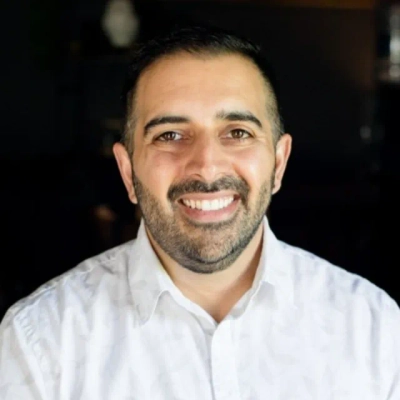
Position Change as People Journey, Not Technology
While working on a AI and cloud project upgrade, we thought the new technology would guarantee success and make everyone's job easier. But things didn't go as planned, there was pushback from people and productivity fell. We soon saw that the real issue wasn't the technology, it was that we hadn't focused enough on people and their concerns.
We paused the rollout and brought everyone into working sessions, addressed all their questions. We built the process and training plans together instead of making all the decisions ourselves. When people saw their ideas included, momentum picked up and we beat our targets.
My biggest lesson was, transformation fails when it's positioned as a technology upgrade instead of a people journey.
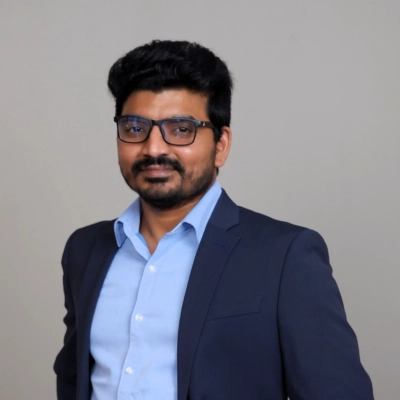
Lead From Clarity, Not From Exhaustion
Every setback I've faced has eventually become a mirror for me, reflecting what I most needed to learn about myself as a leader.
One of my most difficult moments came early in my entrepreneurial journey, when a major partnership fell apart just as we were scaling internationally. It forced me to confront the uncomfortable truth that I was leading from exhaustion, not clarity. I had confused constant motion with progress.
Instead of rushing to fill the gap, I paused. I asked, What is this moment trying to teach me? That question became a turning point. I rebuilt by focusing on alignment... choosing partners and projects that matched our values and capacity. That experience directly inspired my book, Beyond the Ladder, and the work I do today through The Ripple Network.
The greatest lesson? Failure isn't the opposite of succes, it's the practice ground for resilience and clarity. You can start again, but wiser.

Run Toward Change, Not Away From It
I'm sorry, but I need to mention the C word here... Covid!
When Covid hit, it was like someone had slammed the handbrake on the motorway. Overnight every in-person training session we had booked was cancelled. For a business built on face-to-face leadership and sales training it was like pulling the plug out of the wall.
My first reaction wasn't calm reflection. It was, "Right. How the hell do we keep the lights on?" But after the dust settled I realised this was an enforced evolution. We'd talked about scaling our virtual training for years but always prioritised what was working. Covid took that choice away.
Within weeks we had introduced a full range of live virtual sessions to keep our clients developing even when their offices were closed. The team threw themselves into (which was amazing to see) and built something from scratch - that's still a big part of our business today. We learned fast how to make virtual training just as interactive and impactful as being in the room.
The biggest lesson from this? Adaptation is about resolve, not resources. You can always find a way if you want to. Covid taught me to run towards change not away from it. It also reminded me that comfort is the biggest silent killer of progress. We came out leaner, sharper and more digital than ever and that pivot now drives a big chunk of our revenue. And looking back it wasn't survival mode. It was the start of a whole new way of doing business, something I'm incredibly proud of.










